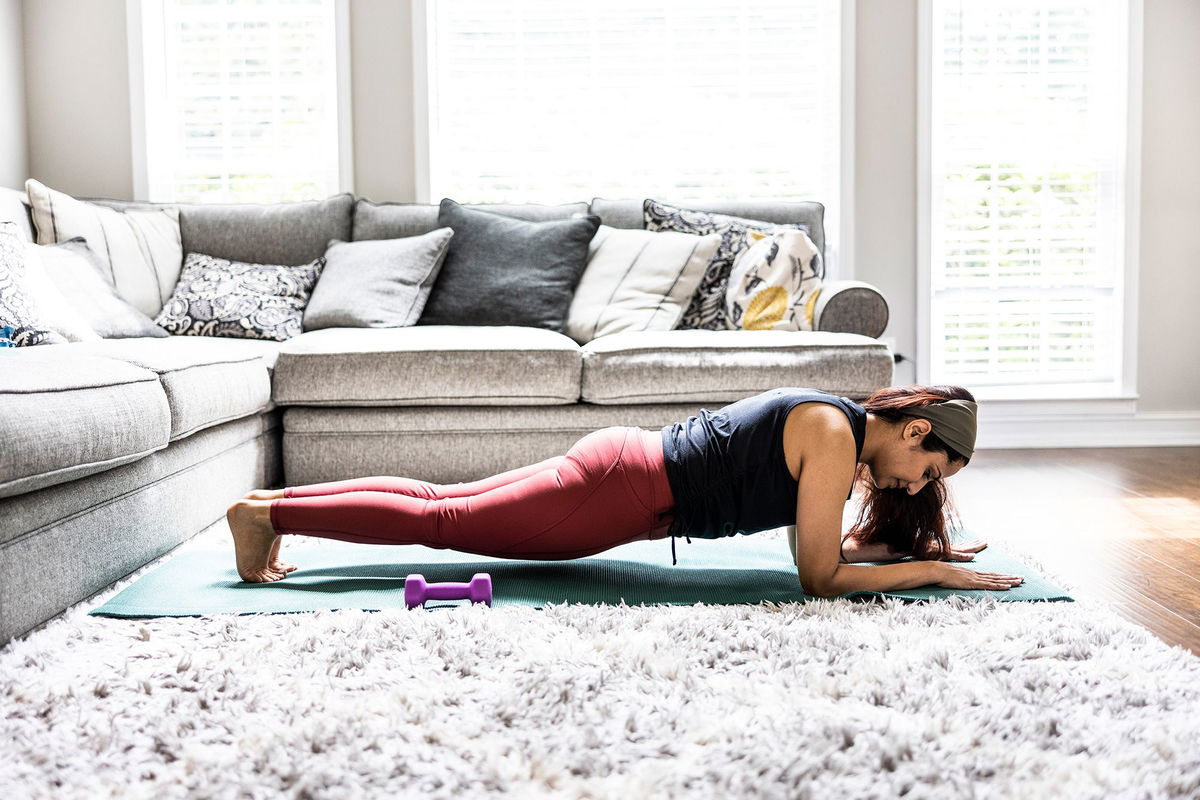How to make friends with the plank exercise for core strength

Maintain proper form when doing a plank. Make sure your back isn't arched and your butt doesn't stick up in the air.
By Melanie Radzicki McManus, CNN
(CNN) — Planks are widely considered by fitness experts to be a fantastic exercise to strengthen the muscles in your core and elsewhere, no matter your age or physical fitness level.
There are numerous versions of the plank, but its basic form involves balancing on your toes and forearms while holding your body off the ground.
A plank may seem daunting, especially if you are not a fitness fanatic. But it can be modified to be more accessible — or much more difficult.
No one knows for sure who invented the plank, but some credit Joseph Pilates, who created the Pilates exercise regimen in the early 1900s. What is clear, however, is that the plank became the favored core exercise a decade or so ago, eclipsing the crunch and sit-up. The latter two exercises can put strain on your spine and hip flexors, while planks do not.
But there are other reasons for the plank’s popularity besides going easy on your spine and hip flexors. One is that planking strengthens numerous muscles in your body at once, said Dr. Claire Morrow, a physical therapist in San Francisco who works with digital musculoskeletal clinic Hinge Health.
“The plank can activate your postural muscles, shoulders, back of the neck, elbows, triceps, hips and quads,” Morrow said. “It is a pretty efficient exercise in terms of the muscle groups activated while doing it.”
Planks are also great at improving your functional fitness, said Julie Logue, director of programming operations for SilverSneakers, a fitness program for adults 65 years and older that’s included with many Medicare Advantage plans.
“If you do planks regularly, they will improve your posture and help you do everyday activities more easily,” Logue said. “They also have a lot of value because they’re body weight based, so you can plank anytime, anywhere.”
Finally, planks can help with a wide variety of issues outside of strength, posture and balance. For example, they have been found to help combat urinary incontinence, according to a December 2021 study published in the journal Healthcare. Your golf swing can also benefit from planking, concluded another study published in the June issue of The Journal of Strength and Conditioning Research.
How to ease into planking
Plank newbies should begin in a standing position, placing their hands on a wall or the edge of a countertop, Morrow said. Walk your feet backward until you’re leaning into the surface. Hold this position for 10 seconds, then repeat four times.
“The position is the first place to start,” Morrow said. “Next is how long to hold it. Once you work up to holding a wall plank for 30 seconds at a time, you can continue to increase the time or change your position.”
Changing positions might mean moving to a lower surface, such as the edge of your couch or a step, or to the floor. Once on the floor, you can do a plank on your knees and hands, or knees and forearms if you have wrist issues, Logue said.
“I also love the bird dog exercise as a way to get started,” she said. “Get on your hands and knees, then extend one arm forward and the opposite leg back. This gets you ready to do body-weight exercises and helps create core strength.”
No matter which position you begin with, planks require attention to form. You should always tighten your core muscles while planking, along with your glutes and quadriceps, the Morrow and Logue said. Your shoulders and hips shouldn’t be sagging, and your butt shouldn’t be sticking up in the air. When in doubt, consult an expert, such as a physical therapist or personal trainer.
Paying attention to your breath is also important.
“Many people hold their breath during planks, which can be dangerous,” Logue said. “Remember to think about your breathing.”
Variations you can try
Once you’ve got the hang of planking on the floor, consider adding some variations. There are many. Side planks involve balancing on one forearm with your feet stacked and your body sideways.
“Side planks work more of your side body and hip abductors,” Morrow said. “They’re good at strengthening your hips for good balance.”
To do mountain climbers, start in the push-up position. From there, you employ a marching motion, bringing your right knee to your right elbow, then left knee to left elbow. You can also bring your right knee to your left elbow, and vice versa, an exercise known as a cross-body mountain climber.
Climbing planks require you to start on your forearms, with toes on the ground, then “climb” up on your hands. From there, you keep alternating climbing down to your forearms with climbing up to your hands.
Ideally, Logue said, you can create a plank regimen that incorporates both traditional planking and several variations, which will help reduce your risk of muscle overuse and create a more balanced body.
The key takeaway is to give planking a try by starting slowly and easily.
“There isn’t a point in any exercise program, whether you’re planking or walking or squatting, where you’re too old or out of shape to try,” Morrow said. “There is always a point of entry. Yours just might be different than someone else’s.”
Melanie Radzicki McManus is a freelance writer who specializes in hiking, travel and fitness.
The-CNN-Wire
™ & © 2024 Cable News Network, Inc., a Warner Bros. Discovery Company. All rights reserved.
